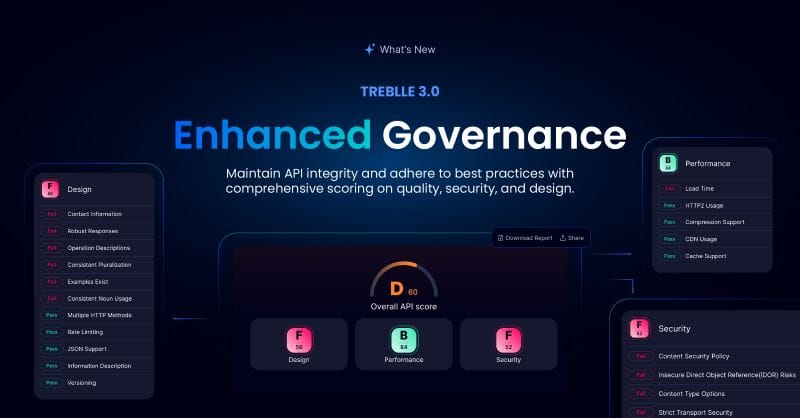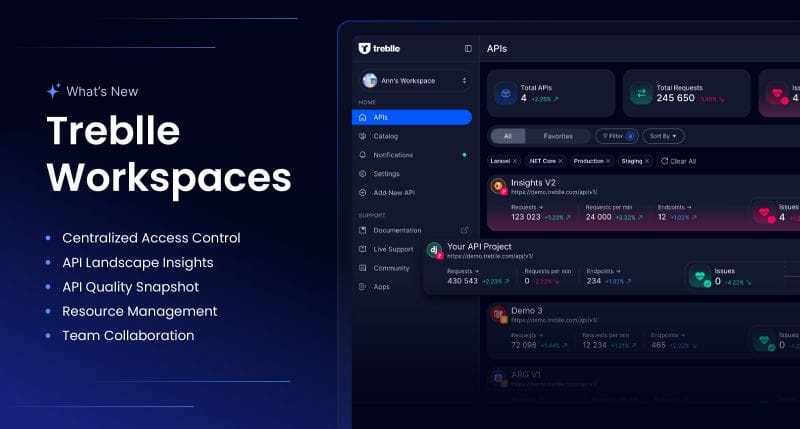API Security | Jan 3, 2025 | 7 min read | By Savan Kharod | Reviewed by Vedran Cindrić

Savan Kharod works on demand generation and content at Treblle, where he focuses on SEO, content strategy, and developer-focused marketing. With a background in engineering and a passion for digital marketing, he combines technical understanding with skills in paid advertising, email marketing, and CRM workflows to drive audience growth and engagement. He actively participates in industry webinars and community sessions to stay current with marketing trends and best practices.
As APIs become increasingly essential to business operations, the need for observability and security to combat intentional misuse has never been higher. API abuse isn’t just a technical glitch; it’s a severe threat that can lead to data breaches, downtime, and significant reputation loss.
In this article, we’ll delve into API abuse, why it matters, and the proactive steps you can take to protect your business.
Protect your APIs from threats with real-time security checks.
Treblle scans every request and alerts you to potential risks.
Explore Treblle
Protect your APIs from threats with real-time security checks.
Treblle scans every request and alerts you to potential risks.
Explore Treblle
API abuse occurs when an API is intentionally misused or exploited to perform actions that compromise security, stability, or data integrity. It’s different from API misuse, which generally involves accidental mistakes or incorrect calls by developers. On the other hand, API abuse is deliberate, often conducted by malicious actors seeking unauthorized access to data or services.
To put it more simply:
Real-time observability enables companies to monitor API usage patterns and detect anomalies indicative of abuse. By continuously tracking API behaviors, businesses can gain insights into potential threats before they cause harm.
The risk of API abuse has surged with the shift towards an API-first approach across industries. Factors such as increased third-party integrations and the widespread adoption of microservices architectures have created more access points for exploitation.
This can lead to several consequences, such as:
This involves automated bots accessing APIs to extract sensitive or proprietary data. For example, a bot may continuously query a financial data API to collect proprietary pricing information, which can be sold to competitors or misused.
Malicious actors use credential stuffing or brute-force attacks to gain unauthorized access to user accounts. When successful, ATOs can expose personal data and even lead to fraud.
Attackers flood an API with many requests, slowing down or crashing services. This can disrupt essential functions and frustrate legitimate users.
If API keys are not securely managed, they may be exposed, leading to unauthorized access. Once a key is compromised, attackers can freely access data or services associated with the API.
Protect your APIs from threats with real-time security checks.
Treblle scans every request and alerts you to potential risks.
Explore Treblle
Protect your APIs from threats with real-time security checks.
Treblle scans every request and alerts you to potential risks.
Explore Treblle
Here are the two most popular API abuse examples of 2024:
In this incident, attackers exploited a vulnerability in the Optus API, leading to a data breach that exposed sensitive customer data. This breach led to financial losses and prompted regulatory scrutiny, affecting the company’s long-term credibility.
T-Mobile’s API was subject to unauthorized access, exposing data for over 37 million users. T-Mobile’s breach exemplified how a single API vulnerability could result in extensive data loss and erode customer trust.
These cases emphasize the importance of continuous API observability to detect unusual patterns and prevent significant losses. Treblle’s observability feature and anomaly detection capabilities could have helped identify these risks early, potentially preventing abuse before the damage occurred.
While there is no sure-shot way to prevent API abuse, here are some best practices in your API program to prevent them from potential abuse:
Limiting the number of requests per user or IP can protect your APIs from abuse tactics like scraping and denial-of-service attacks. Restricting requests can also prevent bots from overwhelming your system and gathering data.
Ensuring secure access is vital. Use API keys, OAuth, and token-based systems to manage authorization securely. Token-based systems with short expiration times can reduce the window for unauthorized access.
Observability platforms allow businesses to detect unusual patterns in API requests, such as an IP address suddenly making thousands of requests quickly. This can serve as an early warning sign, enabling quick responses.
Comprehensive logging provides a trail of API interactions, essential for spotting suspicious activity. Tools like Treblle offer in-depth insights into API usage, helping teams identify anomalies before they escalate.
Treblle’s API Intelligence feature offers complete visibility into your API’s performance, tracking every request, response, and error as they happen. We provide over 40 API-specific data points per request, helping your team spot unusual patterns like traffic spikes or frequent failures that could signal potential abuse.
These data points not only help in preventing API abuse, but they also play a significant role in improving the overall security and performance of the APIs.
Treblle scans every API request for performance, security, and design best practices. It scores them against industry benchmarks and highlights areas for improvement in each category. This supports your API governance efforts by enforcing standards, surfacing issues early, and keeping your APIs compliant and consistent across teams.

Treblle allows teams to monitor for abuse patterns with custom alerts. For example, a sudden spike in requests can trigger alerts, giving security teams time to investigate before further damage is done.
Treblle automatically checks all your API requests for GDPR, CCPA, and PCI-compliant and updates you if the API request fails to comply, so you can act on them before it’s too late.
Treblle’s workspaces allow cross-functional teams to collaborate on API observability. For example, if one team spots a pattern indicative of abuse, they can quickly communicate findings and coordinate a response with other stakeholders.

The evolving threat of API abuse means businesses must adopt an ongoing, proactive approach to API security. Here’s what’s essential:
API abuse is a serious risk to businesses that rely on APIs for critical services and data access. As API abuse tactics become more sophisticated, protecting APIs requires robust observability, multi-layered security, and proactive threat detection.
Treblle’s API intelligence platform provides the real-time observability, advanced alerting, and privacy tools necessary to guard against abuse. By implementing these strategies and tools, businesses can maintain control over their APIs and ensure a safe, secure digital environment for their users.
Protect your APIs from threats with real-time security checks.
Treblle scans every request and alerts you to potential risks.
Explore Treblle
Protect your APIs from threats with real-time security checks.
Treblle scans every request and alerts you to potential risks.
Explore Treblle
 API Security
API SecurityAPI authentication is the gatekeeper between your APIs and the outside world. This article walks through the four common methods: Basic Auth, API keys, bearer tokens, and OAuth 2.0, and explains how they work, where they fit, and what trade-offs they introduce when you move from local tests to real traffic.
 API Security
API SecurityAuthentication proves who’s calling your API. Authorization decides what that caller can do once inside. This guide breaks down the fundamental difference between API Authentication vs API Authorization.
 API Security
API SecurityAPI keys are a simple and widely used authentication method, but they’re often misunderstood. This guide breaks down what API keys are, when to use them, when not to, and how to secure them with best practices and real-world examples.